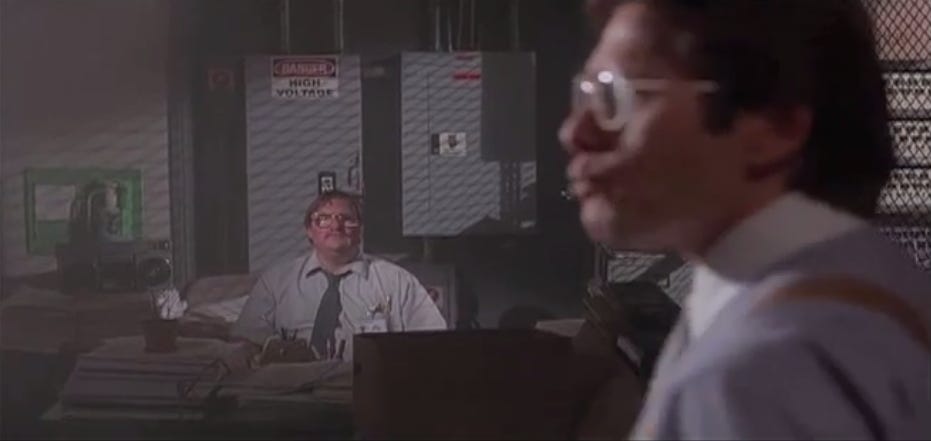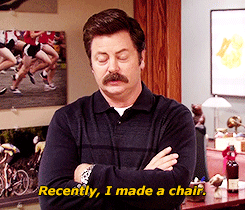#2 - CEOs, can you dig?
Parenting philosophies, executive leadership, and getting in the weeds to get past Return to Office
You know how some books or articles stick with you for days, sometimes weeks, after you finish it? Or those songs that worm their way into your brain, and even the faintest sound starts up the bridge? Well, one specific episode of NPR’s “Hidden Brain” podcast has done just that for me since its release in 2017.
Host Shankar Vedanta melodically narrates “Kinder-Gardening,” which navigates the parenting fallacy of being able to shape children into particular kinds of adults, the repercussions, and the alternatives. Featuring Alison Gopnik, a UC Berkeley professor and author of “The Gardener and the Carpenter,” Kinder-Gardening lays out these two opposed parenting mindsets: carpentry, which is founded on precision, control, and (perceived) high-quality outcomes like getting into an Ivy League school or a top athletic program, and gardening, which is founded on adaptability, resilience, high-quality inputs, and an open mind about what future a child chooses based on the fertile ground they’ve grown upon.
Quick shout out to my parents - two business majors - for mostly keeping it together when I declared a religious studies major and philosophy minor at Gettysburg College.
So, why have I - a workplace strategist and non-parent - cared about this gardener-carpenter paradigm for nearly a decade, you ask? I've been convinced that this paradigm is not exclusive to parenting and is relevant to the way we work, the way that businesses operate, and - perhaps most importantly - how CEOs and other executives view their roles and responsibilities. Every company and how it’s run lands somewhere on this spectrum of carpentry and gardening, but Return to Office and the ongoing tensions between executives and employees tells us that more executives prefer sawdust and power tools to topsoil and shovels.
Being a carpenter in today’s world of work - grasping for structure in an increasingly fluid situation - is unenviable. Despite this reality, many executives still view themsekves and their responsibilities to be those of a master carpenter and either don't know how to garden, are skeptical of how to get started, or are simply afraid of what it would mean to get their hands dirty.
As expected, leading into September, the news doubled down on the Us versus Them narrative between executives and employees with this latest Return to Office wave.
I asked ChatGPT to quantify how many articles have been written about RTO thus far in 2023, and it responded, “Several.”
Andy Jassy, CEO and President of Amazon, was center stage as this RTO season's starlet. In a statement outlining Amazon’s justification for requesting that employees submit resignation letters if unwilling or unable to relocate within a certain radius of an Amazon office, Jassy stated that he had spoken with several other executives, and “virtually all of them prefer” to have people back in the office a certain number of days a week.
Preference is sneaky, though. It’s highly personal and based on an individual's perception of experience. Driven by emotion, sentiment, and the “remembering brain” - famous for the flourish of negative bias added to your memory - preference often has nothing to do with information and data. There’s a strong chance you’ve caught some of the stories from the past few years about how people have changed their lives and lifestyles thanks to flexible and remote work and how cities can evolve beyond the Monday-to-Friday commuter surge.
The data does not support executive preferences to have their people back in the office and enforce strict RTO policies. Are there benefits to being in proximity to colleagues and teammates? No doubt. Does it need to be every week or multiple times a week? Depending on what phase of your career you’re in, no - not necessarily. Is there value in being in the office 3-4 times a week if your workload is the same, regardless of where you’re sitting that day? Definitely not.
So, why do these executives continue to double down on their version of the truth? For starters, most of them came up in workplaces that were hyper-reliant on proximity. Historically, the further you and your team are seated from the C-suite, the less organizational influence is at your disposal.
Most of today’s executives came up in the heyday of the “see and be seen” office culture that still (troublingly) champions that young upstarts and anyone trying to get ahead at work should follow the “first one in, last one out” logic. (For those not yet hardened by experience, don’t believe it. Save yourselves.)
The underlying reason executives are resistant to changes and leaning hard on their preference for people to be in the office is that anything other than what has “worked” in the past presents a tremendous risk they would prefer to avoid. To them - and the shareholders they’re accountable to - the way a company operates should be a stabilizing agent, not a risk one.
This carpenter mentality comprises lagging indicators, data that reflects past performance but needs leading indicators that help to interpret how current performance and trends will coalesce further along the horizon. Past performance is easy to measure, hence its stabilizing nature, but it is relatively useless when considering the breadth and pace of change that we’ve experienced in the past three and a half years.
Our concept of time is completely distorted, and the version of ourselves who entered the pandemic era and who we are today can barely reconcile the other. And yet, with every RTO effort, executive hope springs eternal to engineer their workforces to revert with the standard working model like we did in the Before Times. It’s just not possible, though. We’ve experienced too much to fit into the pre-pandemic mindset, but executives still refuse to acknowledge this truth. Not because they’re [all] out of touch and don’t have any empathy but because, if they accept that too much has changed, one of their vital operational stabilizers - a workforce operating like a perfect, Taylorist machine - has fallen out from under their feet. But, it’s important to remember that executives are in their roles to create profits for their shareholders, not design the future of how we live, work, and relate to one another.
In the mind of a carpenter, this is a structural failure of the highest degree. The only way to move forward is to return to the drawing board, retrace every step taken, and build a new system that will protect us from this specific failure in the future but still leave us feeling the growing pains when different and unidentified challenges arise. For a gardener, however, this catastrophe could be any summer thunderstorm that starts pelting hail the size of golf balls. In other words, gardeners accept and embrace that something unexpected and unplanned can always happen.
This is not to say that gardeners are inherently better or more capable than carpenters - have you ever seen a Japanese joinery or a mashrabiya? - but rather to emphasize that companies, like those who work within them, are living organisms in constant conversation with their ever-changing environment, not inanimate objects, albeit beautifully crafted.
Being a gardener of any kind is not for the faint of heart; who among us hasn’t struggled to keep a hardy snake plant or humble pothos plant alive at some point in our lives? It requires humility, curiosity, grit, and agility to respond to the evolving needs of an entire microsystem (or ecosystem, depending on how hardcore you are). Gardeners know that just because something worked last week or last year doesn’t mean it will work today.
Although gardeners rely on their adaptiveness, it doesn’t mean they are out in the world with no plans; it's the opposite. Unlike carpenters, however, gardeners are guided by principles, not rules. Their approaches are flexible enough to apply to various situations when unforeseen challenges arise, improvising and iterating based on the current situation and internalizing the learnings for the future.
Gardening is an imperfect science and a true art form that relies on (my favorite concept of late) anti-fragility. Leading an organization with a gardener mindset is no different. It means that an executive isn’t just looking at the performance of the business from the past few quarters. It means they’re consistently relying on their quartermasters (😉) to merge data and insights from experts about the current socioeconomic environment and where it’s likely headed, their business leaders about performance and challenges, their most recent employee sentiment data to gauge how employees are managing their work and whether the company is supporting them sufficiently, and finding thought leaders that can help challenge their assumptions because they know that they only know what they know…which is a lot, but most certainly not everything.
Zen Buddhism and pop psychology found on social media feeds implore us to embrace a beginner’s mindset, approach newness with openness and curiosity, and not fear things outside our worldview. We need our executives to turn off their table saws, put the lumber away, and touch grass with us. Just because widespread flexibility and distributed work are new does not mean it’s bad, and it certainly doesn’t have to be a destabilizing force within a business. At its core, providing flexibility and distributed work to employees meets them where they are, literally and figuratively. With the simple acts of listening and taking action to support, a company can reap exponential benefits from an engaged and motivated workforce. Go figure.
So, where do we go from here?
The general answer is research and experimentation, but the most genuine answer is to create clarity and specificity around how and where employees and their work are supported within an organization, what can be improved, and how. This can look like:
Workflow Friction Analysis - what gets in the way of employees’ ability to be productive and effective and why?
Workplace Purpose Assessment- what role does the built environment serve for a company and why?
Ways of Working Development - how does a company support various work activities through places, spaces, tools, and programs?
Ultimately, any action toward creating clarity is better than no action or an action to reinstate past practices. Just remember, gardening is an imperfect science; do the research, get to planting, and see what grows.
See you in the weeds,
Corinne
Thanks for being a reader. Click here to listen to The Workplace Strategist playlist, too! The songs chosen are meant to add a dash of irreverence and motivation to our journey. New songs will be added with each newsletter to keep us moving.







